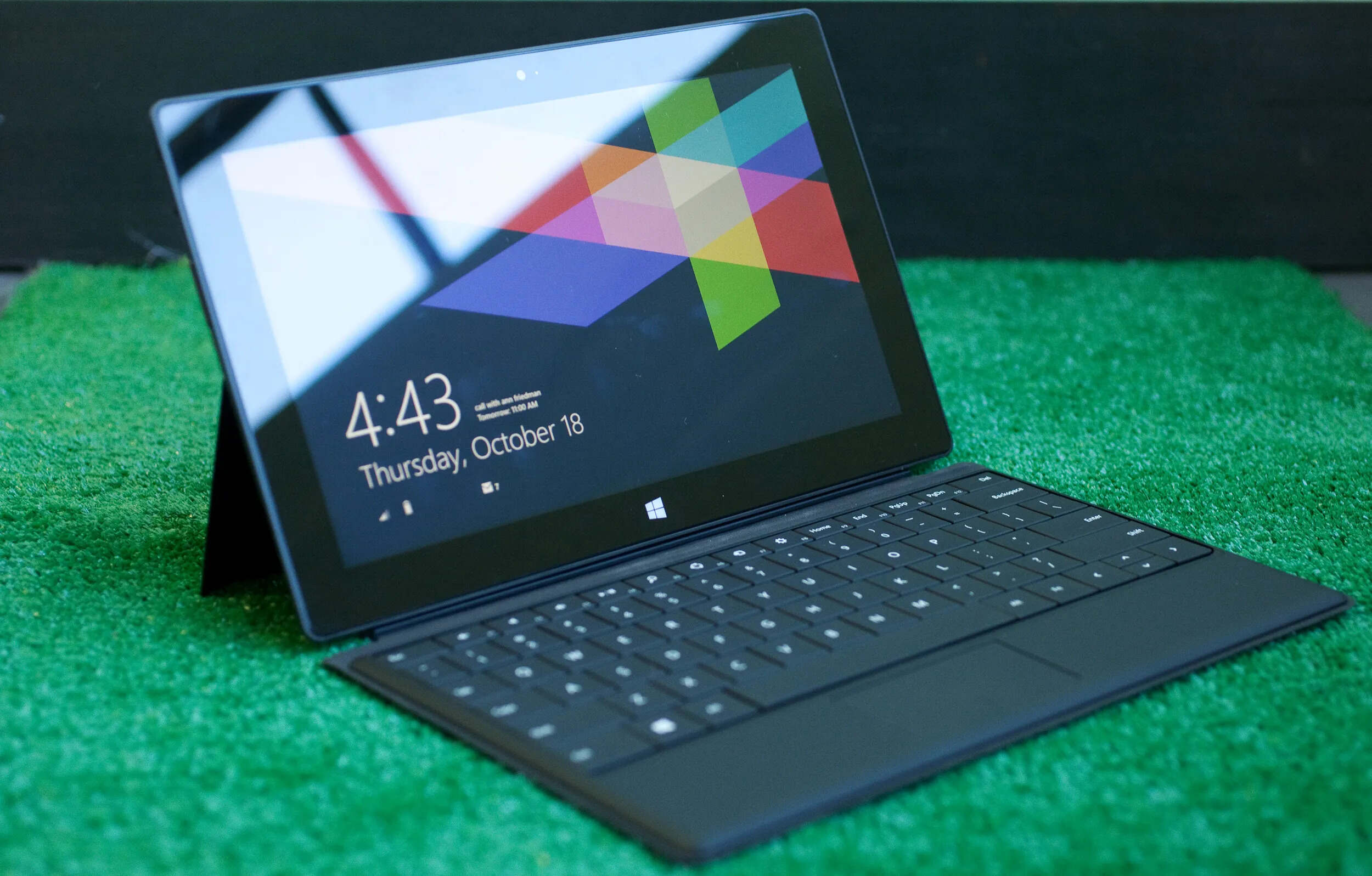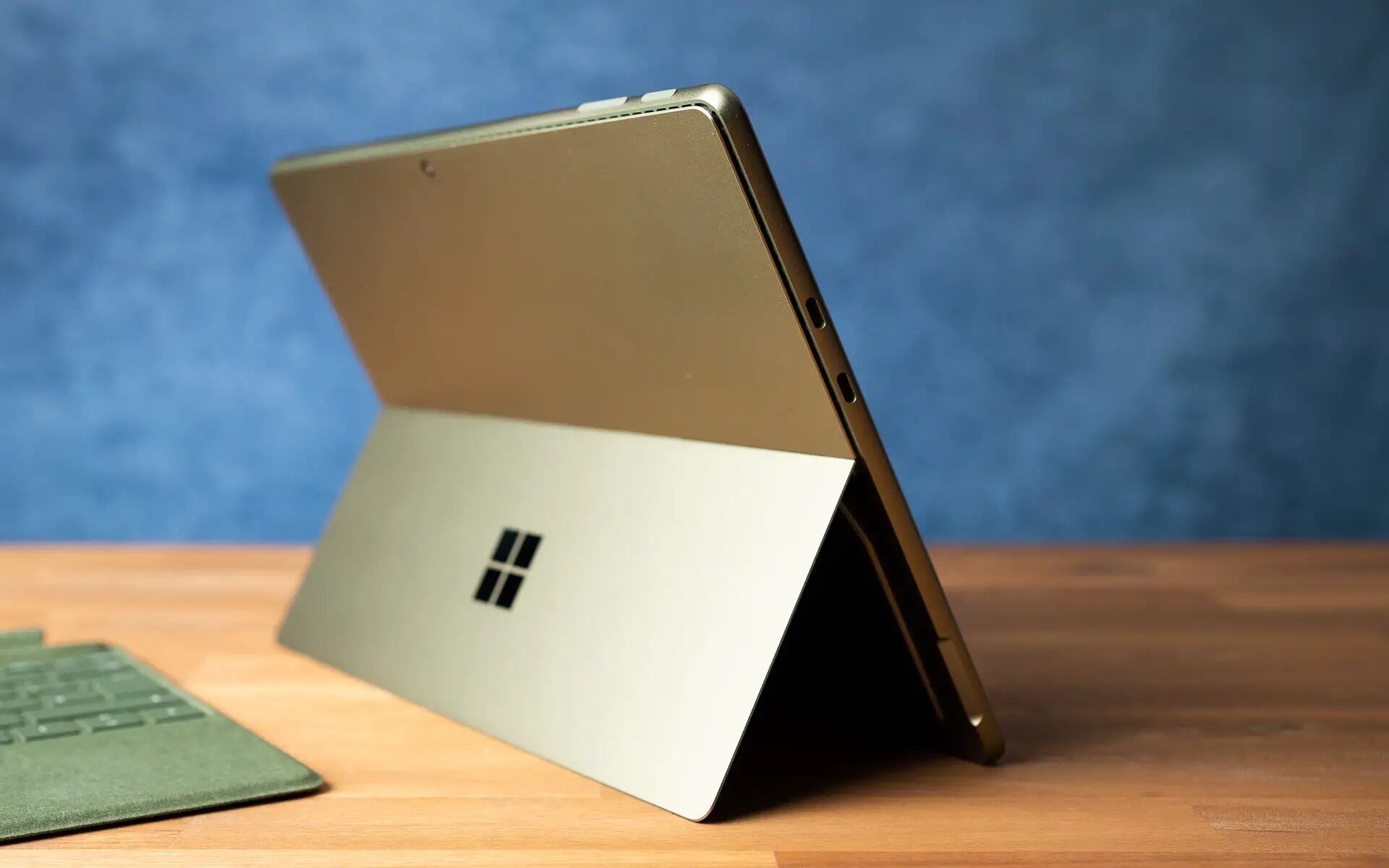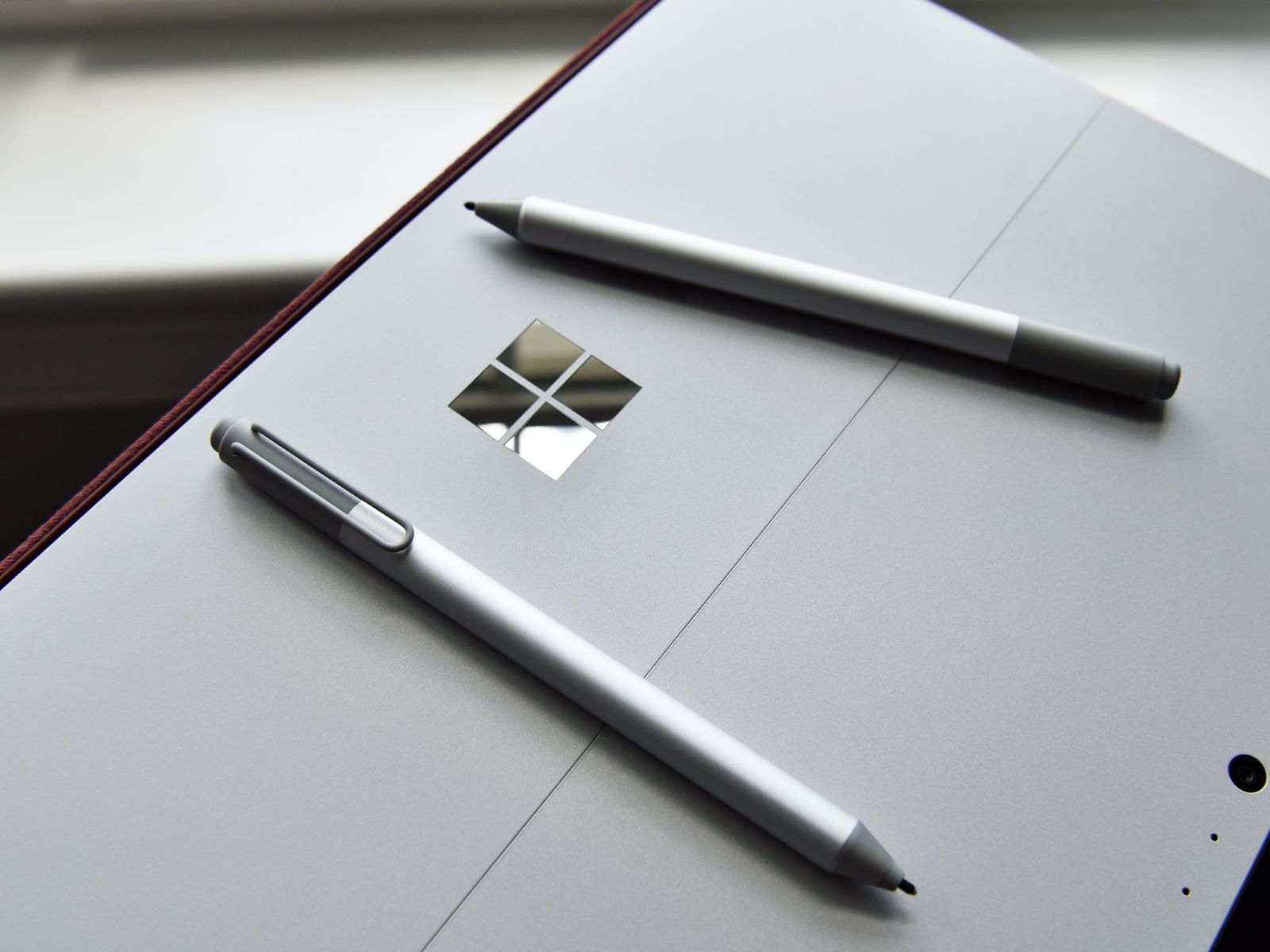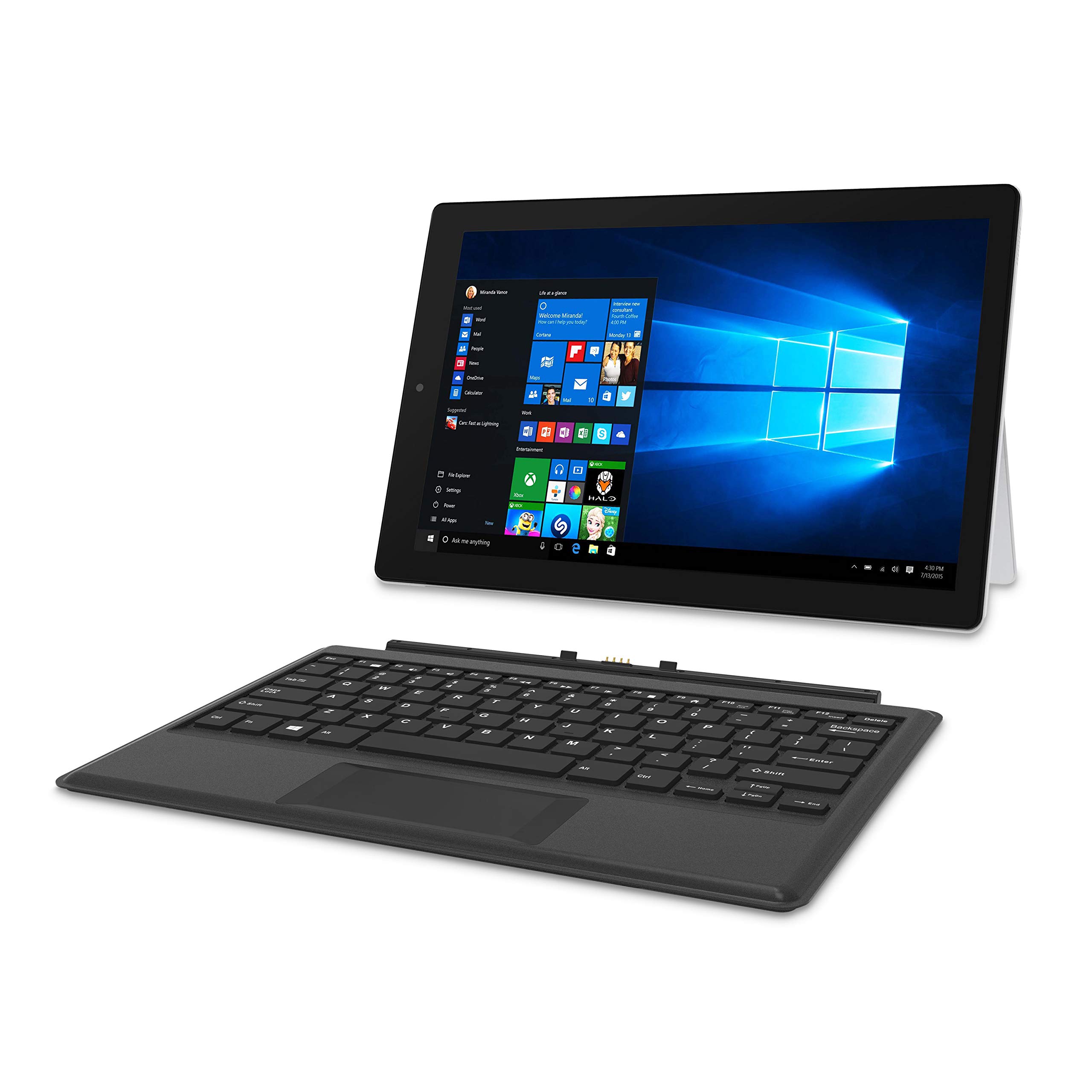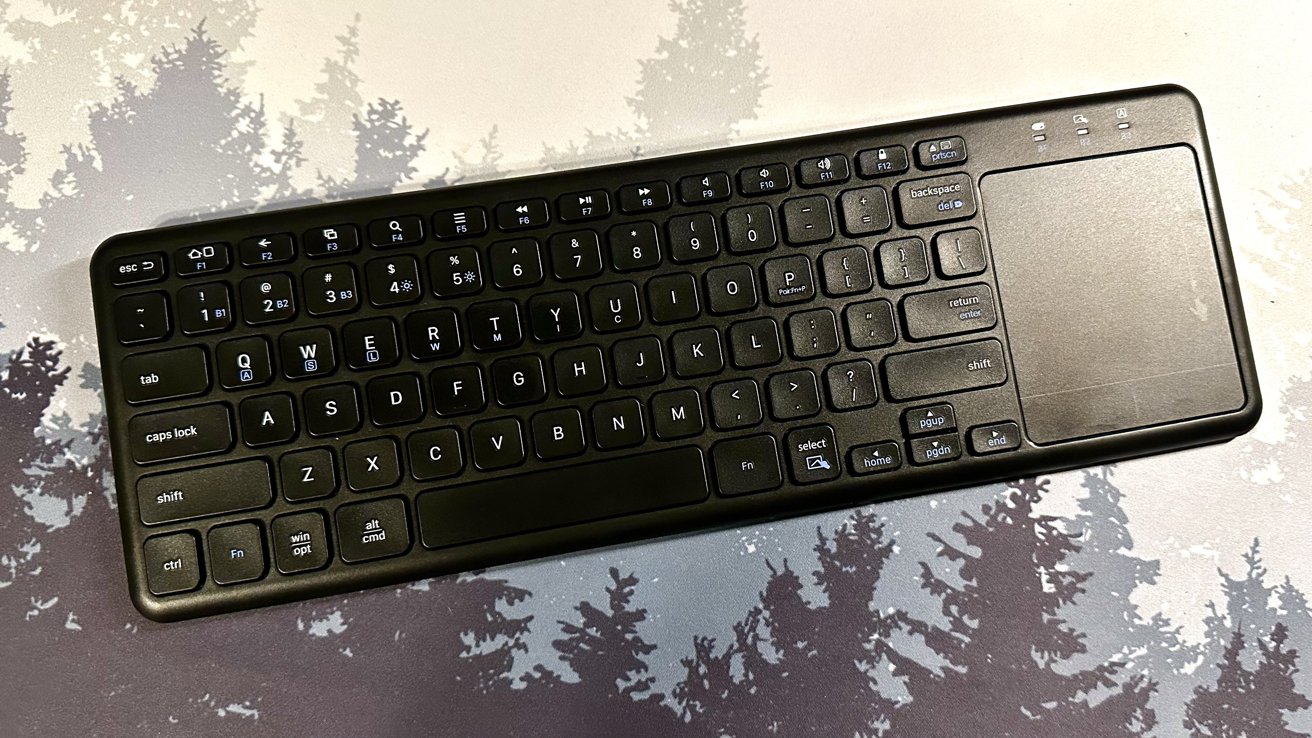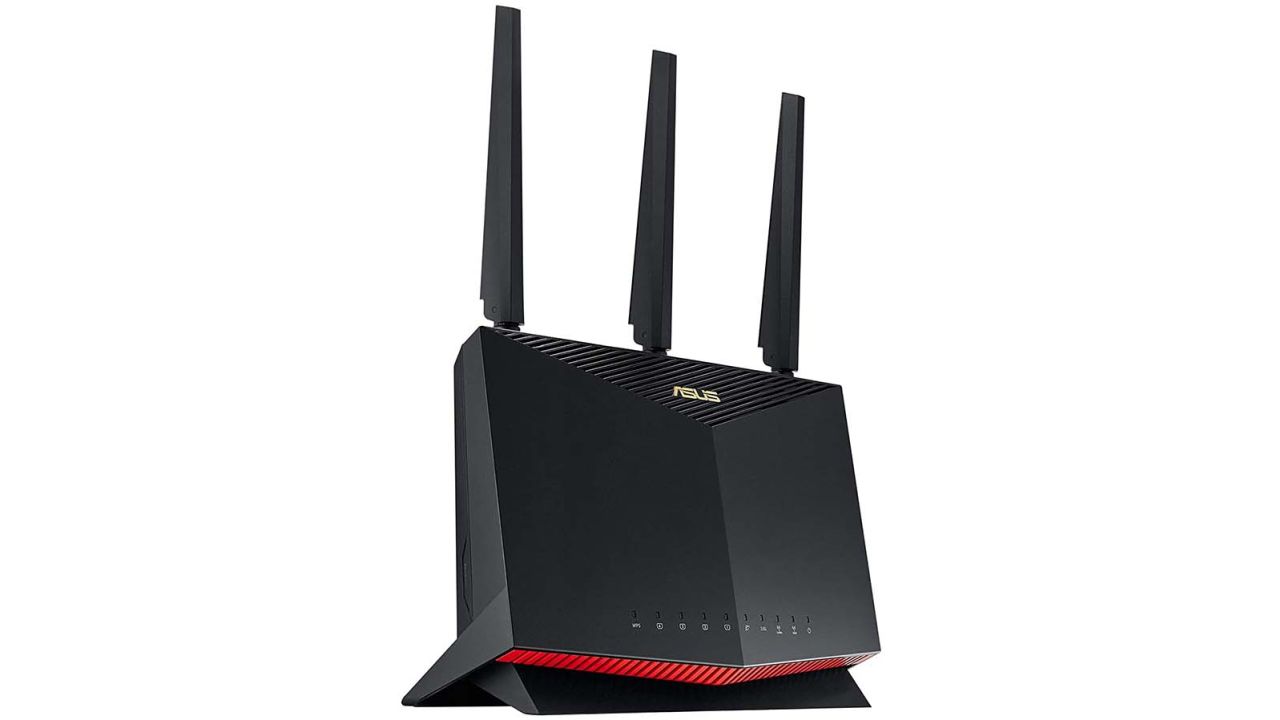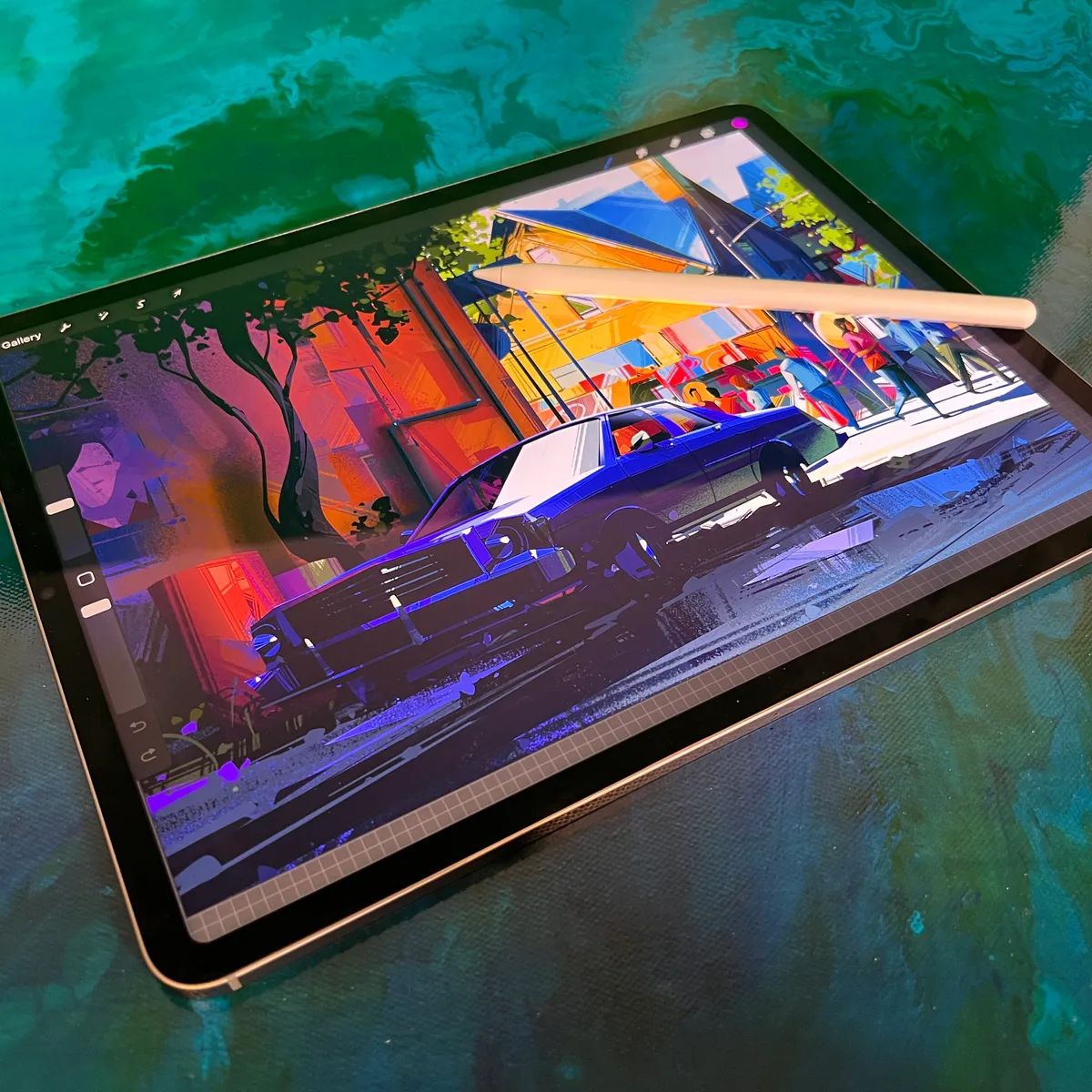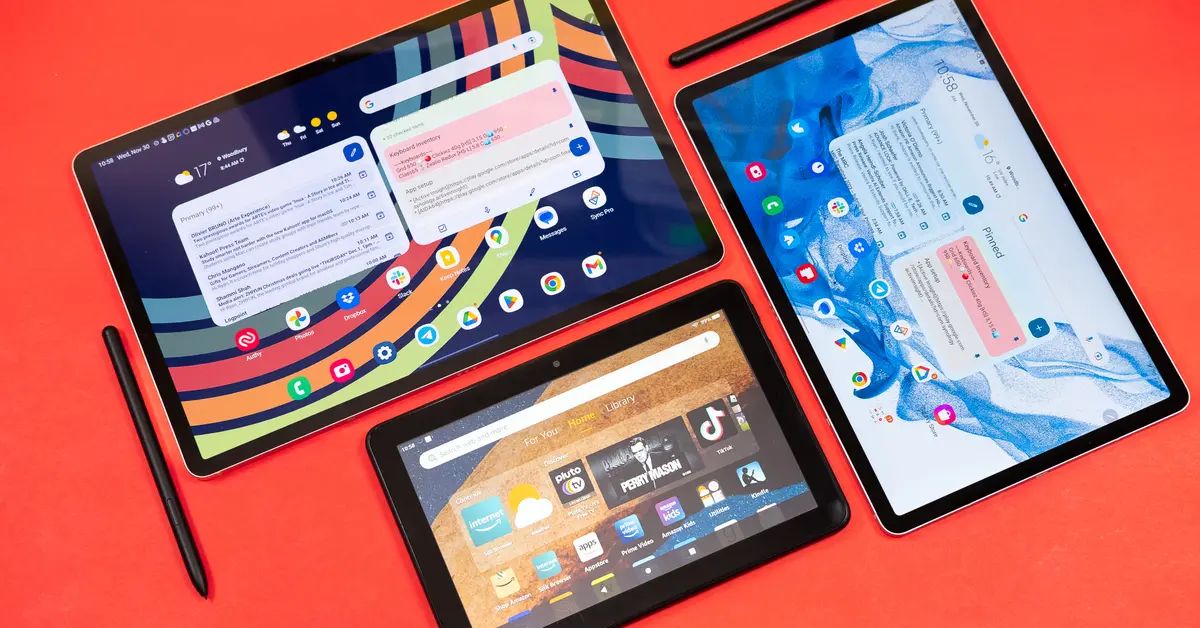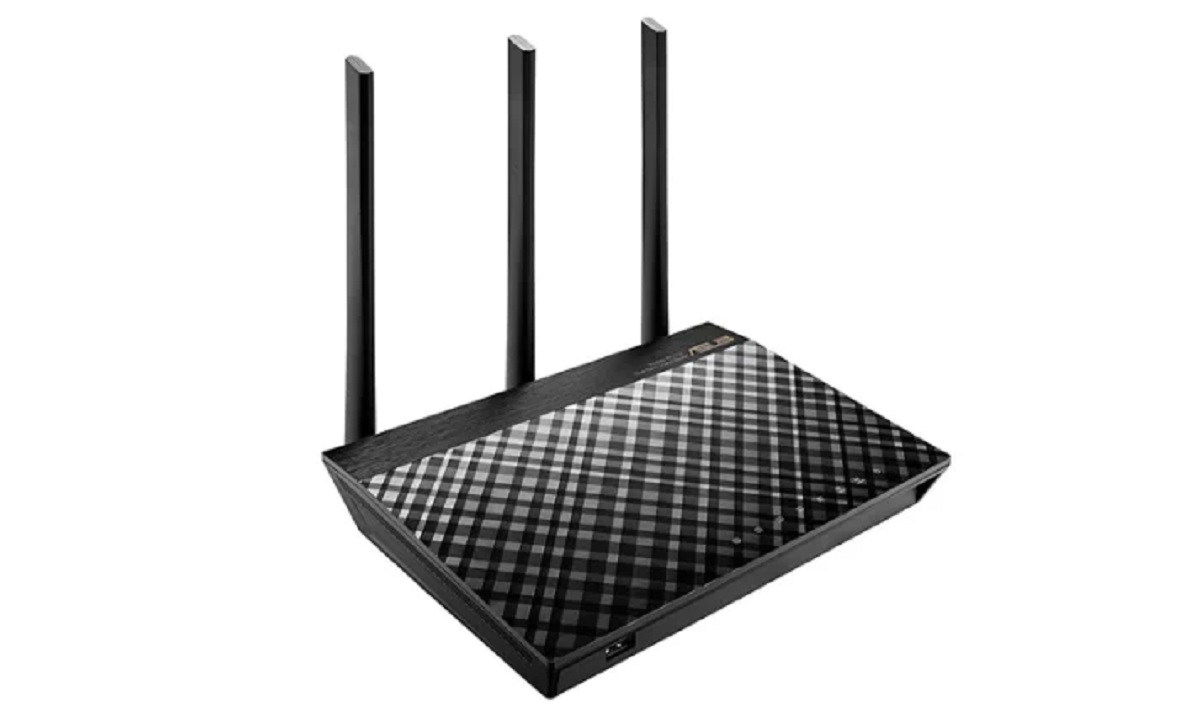Introduction
Welcome to the world of Windows RT tablets, an exciting device that combines the power and versatility of a tablet with the familiarity of the Windows operating system. Whether you’re a tech enthusiast or a casual user, Windows RT tablets offer a unique and user-friendly experience that can enhance your productivity and entertainment needs.
But what exactly is a Windows RT tablet? In this article, we will explore the key features of Windows RT and how it differs from other versions of Windows, as well as help you determine if a Windows RT tablet is the right choice for you.
Windows RT is a special variant of the Windows operating system designed specifically for tablets. It offers a touch-centric interface and a lightweight, streamlined version of Windows that is optimized for mobile devices. With Windows RT, you can enjoy the convenience of a tablet while still having access to many familiar Windows applications and features.
One of the main advantages of Windows RT tablets is their seamless integration with the Windows ecosystem. This means you can easily access your files, settings, and applications across multiple devices, providing a cohesive and connected experience. Whether you’re at home, at the office, or on the go, you can stay productive and connected with your Windows RT tablet.
Windows RT tablets come equipped with a range of features designed to enhance your tablet experience. These include a user-friendly interface, a wide range of applications, long-lasting battery life, and excellent security features. Additionally, Windows RT tablets often feature high-quality displays, powerful processors, and expandable storage options, allowing you to enjoy a rich multimedia experience and tackle tasks with ease.
While Windows RT shares many similarities with the more familiar Windows 8, there are also some key differences you should be aware of. Unlike Windows 8, Windows RT is only compatible with applications that are specifically designed for the Windows RT platform. This is due to the unique architecture and restrictions of Windows RT, which limits the use of traditional desktop applications.
Now that you have a general understanding of what a Windows RT tablet is, the next step is to determine if it’s the right choice for you. In the following sections, we will explore the pros and cons of using a Windows RT tablet, the availability of applications, and how to choose the best Windows RT tablet to suit your needs. Let’s dive in!
What is Windows RT?
Windows RT is a lightweight and streamlined version of the Windows operating system specifically developed for tablets. It was introduced by Microsoft as an alternative to Windows 8, providing a touch-centric user interface and a mobile-friendly experience.
Unlike its counterpart, Windows 8, which runs on both desktops and tablets, Windows RT is designed exclusively for tablets. It offers a simplified and intuitive user interface that is optimized for touchscreen interaction, making it easy and convenient to navigate through various applications and features.
One of the defining aspects of Windows RT is its compatibility with devices that use ARM-based processors instead of the traditional x86 processors. ARM processors are known for their energy efficiency and are commonly used in mobile devices, making Windows RT tablets more power-efficient and providing longer battery life.
Windows RT tablets come preinstalled with a suite of productivity applications, including Microsoft Office (Word, Excel, PowerPoint, and OneNote), which provides users with essential tools for creating and editing documents, spreadsheets, presentations, and notes. These applications are optimized for touch interaction, allowing users to work efficiently on the go.
Despite being a lightweight version of Windows, Windows RT still retains key features that users associate with the Windows operating system. You can personalize your device by customizing the Start screen with Live Tiles, accessing the Windows Store to download and install applications, and connecting to external devices using USB ports or wireless connectivity.
Furthermore, Windows RT integrates seamlessly with other Windows devices, enabling users to synchronize their settings, files, and applications across different platforms. This synchronization promotes a consistent and unified experience, allowing users to seamlessly transition between their Windows RT tablet and other devices.
It is important to note that Windows RT has limitations when it comes to running traditional desktop applications. Unlike Windows 8, which is compatible with both desktop and tablet applications, Windows RT can only run applications specifically designed for the platform. This restriction is due to the difference in architecture between x86 and ARM processors.
To summarize, Windows RT is a tablet-specific operating system that provides a touch-centric interface, longer battery life, and seamless integration with other Windows devices. While it may have limitations in terms of app compatibility, Windows RT tablets are still capable of performing essential tasks and providing a portable and productive experience for users.
What are the key features of a Windows RT tablet?
Windows RT tablets offer a range of features that enhance the user experience and differentiate them from other tablet platforms. Let’s explore some of the key features that make Windows RT tablets stand out.
User-Friendly Interface: Windows RT tablets feature a user-friendly interface designed for touch interaction. The Start screen, filled with Live Tiles, provides quick access to frequently used apps and customizable widgets that display real-time information at a glance.
Microsoft Office Suite: One of the standout features of Windows RT tablets is the inclusion of the Microsoft Office suite, which includes Word, Excel, PowerPoint, and OneNote. This allows users to create, edit, and view documents on the go, making Windows RT tablets a great choice for productivity on the move.
Seamless Integration: Windows RT tablets seamlessly integrate with other Windows devices, enabling users to sync settings, files, and applications across multiple devices. This integration promotes a cohesive experience and allows for effortless transition between devices.
Long Battery Life: Windows RT tablets are known for their energy efficiency, thanks in part to the ARM-based processors they use. This results in longer battery life compared to traditional x86-based tablets, allowing users to enjoy extended use without worrying about frequent charging.
Windows Store: Windows RT tablets have access to the Windows Store, which provides a wide range of applications specifically designed for the Windows RT platform. From productivity tools to entertainment apps, users can find and download apps that cater to their specific needs.
External Connectivity: Windows RT tablets are equipped with USB ports, allowing users to connect external devices such as keyboards, mice, printers, and storage devices. They also support wireless connectivity options like Bluetooth and Wi-Fi, enabling seamless connections to other devices and networks.
High-Quality Displays: Many Windows RT tablets feature high-resolution displays that provide crisp and vibrant visuals. Whether you’re watching videos, playing games, or working on documents, the quality of the display enhances the overall experience.
Expandable Storage: Windows RT tablets typically come with built-in storage options, but some devices also offer expandable storage through microSD card slots. This allows users to increase the storage capacity of their tablets, providing more room for apps, files, and media.
These are just some of the key features that Windows RT tablets offer. Whether you’re a student, professional, or casual user, Windows RT tablets provide a versatile and user-friendly platform that caters to various needs and preferences.
How is Windows RT different from Windows 8?
Windows RT and Windows 8 may share some similarities, but they also have several key differences. Here are the main distinctions between the two operating systems:
Compatibility: One of the significant differences between Windows RT and Windows 8 is the compatibility of applications. Windows 8 is compatible with both desktop applications designed for x86-based processors and tablet apps from the Windows Store. On the other hand, Windows RT is limited to running applications specifically developed for the Windows RT platform. This limitation is due to the difference in architecture between x86 and ARM processors.
Processor Architecture: Windows 8 runs on both x86-based processors, which are commonly found in traditional computers, and ARM-based processors, which are usually used in mobile devices. In contrast, Windows RT is exclusively designed for devices that use ARM-based processors. The use of ARM architecture in Windows RT tablets contributes to enhanced power efficiency and extended battery life compared to Windows 8 tablets running on x86 processors.
Desktop Interface: Windows 8 provides a dual-interface experience, with the familiar desktop interface and the modern, touch-optimized Start screen. Users can seamlessly switch between the two interfaces based on their preference and the device they are using. However, Windows RT does not offer the full desktop experience. While it includes a limited desktop environment, it only supports built-in applications such as File Explorer, Internet Explorer, and Office, and does not allow the installation of third-party desktop applications.
Microsoft Office Suite: Another significant difference is the inclusion of the Microsoft Office suite. Windows RT tablets come preinstalled with Word, Excel, PowerPoint, and OneNote, providing users with essential productivity tools on the go. In contrast, Windows 8 tablets do not include the complete Microsoft Office suite by default, although the applications can be separately purchased and installed from the Windows Store.
Device Options: Windows 8 offers a wider variety of device options, including traditional laptops, desktops, and tablets. Windows RT, on the other hand, is primarily focused on tablets and has limited availability in other form factors. This difference allows consumers to choose the device that best suits their needs and preferences.
Price Point: Windows RT tablets are generally more affordable compared to Windows 8 tablets, primarily due to the use of ARM-based processors and the exclusion of the full desktop experience. This makes Windows RT tablets an attractive option for those looking for a more budget-friendly tablet.
These differences highlight the specific characteristics and limitations of Windows RT compared to Windows 8. Understanding these distinctions can help users make an informed decision when choosing between the two operating systems based on their specific needs and preferences.
Is Windows RT right for you?
Determining whether Windows RT is the right choice for you depends on your specific needs and preferences. Here are a few factors to consider when deciding if Windows RT is a suitable operating system for your tablet:
Usage and Productivity: If you primarily use your tablet for web browsing, media consumption, and basic productivity tasks, such as email, document editing, and light multitasking, then Windows RT can be a good fit. Its integration with Microsoft Office ensures that you have the necessary tools for productivity on the go.
App Compatibility: It’s important to note that Windows RT is limited to running applications specifically designed for the platform. If you heavily rely on specific desktop applications or have a particular software requirement not available on the Windows RT platform, you may need to consider a device running Windows 8 or another operating system that offers broader application compatibility.
Budget-Friendly Option: Windows RT tablets are generally more affordable compared to their Windows 8 counterparts. If you’re looking for a budget-friendly tablet that still provides essential productivity features and a seamless Windows ecosystem integration, Windows RT can be a cost-effective choice.
Battery Life: Windows RT tablets are known for their energy efficiency and longer battery life. If having a tablet that can keep up with your active lifestyle without frequent charging is important to you, then Windows RT can provide a longer-lasting mobile computing experience.
Seamless Integration: If you already use other Windows devices, such as a desktop or laptop running Windows, and want a tablet that seamlessly integrates with your existing Windows ecosystem, then Windows RT is a fitting choice. It allows you to sync your settings, files, and applications across devices, ensuring a cohesive and connected experience.
Device Form Factors: While Windows 8 tablets come in various form factors, including laptops and desktops, Windows RT tablets are primarily designed in a tablet form factor. If you prefer the tablet form factor and prioritize a touch-optimized user interface, Windows RT offers a focused and streamlined experience.
Considering these factors will help you determine if Windows RT aligns with your specific needs and preferences. Windows RT tablets excel in offering a user-friendly interface, integration with the Windows ecosystem, affordability, and extended battery life. However, it’s essential to weigh the limitations of app compatibility and the absence of the full desktop experience when making your decision.
Pros and Cons of using a Windows RT tablet
Like any operating system, Windows RT tablets have their own set of advantages and disadvantages. Let’s explore the pros and cons of using a Windows RT tablet to help you make an informed decision:
Pros:
- Seamless Integration: Windows RT tablets seamlessly integrate with other Windows devices, allowing you to sync settings, files, and applications across devices. This integration provides a cohesive and connected experience within the Windows ecosystem.
- Microsoft Office Suite: Windows RT tablets come with the Microsoft Office suite, including applications like Word, Excel, PowerPoint, and OneNote. This makes it a great choice for productivity on the go, allowing you to create, edit, and view documents with ease.
- User-Friendly Interface: Windows RT offers a user-friendly, touch-centric interface with Live Tiles on the Start screen. Navigating through apps and features is intuitive, making it easy for users to adapt to and use the tablet.
- Battery Life: Windows RT tablets are known for their energy efficiency, thanks to the ARM-based processors. This results in longer battery life compared to traditional x86-based tablets, allowing for extended use without frequent charging.
- App Availability: While the app selection for Windows RT may not be as extensive as for other platforms, there is still a range of applications available in the Windows Store specifically designed for Windows RT. You can find productivity tools, entertainment apps, and more to enhance your tablet experience.
Cons:
- App Compatibility: Windows RT is limited to running applications specifically designed for the platform. This means that you may not have access to certain desktop applications that are available for Windows 8 or other operating systems. It’s essential to ensure that the apps you need are available for Windows RT.
- Limited Desktop Experience: Unlike Windows 8, Windows RT does not offer the full desktop experience and has limited support for traditional desktop applications. While it includes a basic desktop environment, only built-in applications like File Explorer and Internet Explorer are available.
- Hardware Limitations: Windows RT tablets are limited to ARM-based processors, which may not offer the same performance as x86-based processors found in Windows 8 tablets. This can impact the speed and capabilities of certain tasks and applications.
- Device Availability: While Windows 8 tablets come in various form factors, Windows RT tablets are primarily designed as tablets. If you prefer other device form factors, such as laptops or desktops, you may have fewer options available with Windows RT.
- Restrictions on Desktop Customization: Windows RT has limitations on customizing the desktop interface compared to Windows 8. It restricts users from installing third-party desktop applications, making it less flexible for advanced users who want to personalize their desktop experience.
Considering these pros and cons will help you evaluate whether a Windows RT tablet suits your needs. Windows RT tablets offer seamless integration, productivity tools like Microsoft Office, an intuitive interface, good battery life, and a range of available apps. However, limitations in app compatibility, limited desktop experience, and hardware restrictions should be taken into account when choosing an operating system for your tablet.
What apps are available for Windows RT?
Windows RT may have limitations in terms of app compatibility compared to other platforms, but there is still a range of applications available specifically designed for the Windows RT platform. Let’s explore the types of apps you can find in the Windows Store for your Windows RT tablet:
Productivity Apps: Windows RT tablets come with a suite of productivity applications, including Microsoft Office (Word, Excel, PowerPoint, and OneNote). These Office apps are optimized for touch interaction and provide the essential tools for creating, editing, and managing documents, spreadsheets, presentations, and notes.
Communication Apps: Stay connected with communication apps available on Windows RT. You can find popular messaging and video calling apps like Skype, as well as email clients to manage your emails efficiently.
Browsing and Entertainment Apps: Windows RT offers a variety of web browsers, including Internet Explorer, to browse the internet securely and smoothly. Additionally, you can find entertainment apps to stream movies, TV shows, and music, bringing your favorite content right to your fingertips.
Social Media Apps: Stay connected with your social networks using popular apps like Facebook, Twitter, Instagram, and more. These apps allow you to update your status, share photos and videos, and interact with your friends and followers on your Windows RT tablet.
Gaming Apps: There is a selection of gaming apps available in the Windows Store for Windows RT tablets. Whether you’re a casual gamer or a more serious enthusiast, you can find a range of games that cater to your interests and provide an enjoyable gaming experience.
News and Information Apps: Stay up to date with the latest news, weather, and other information using news apps and weather apps available for Windows RT. These apps provide personalized news feeds, breaking news alerts, weather forecasts, and more.
Educational and Learning Apps: Windows RT tablets also offer educational and learning apps that can be useful for students, professionals, or anyone seeking to expand their knowledge. From language learning apps to virtual textbooks, there are various educational resources available in the Windows Store.
Utilities and Tools: You can find a range of utility applications and tools to enhance your productivity and customize your Windows RT tablet. These include file managers, system maintenance tools, note-taking apps, and more.
Health and Fitness Apps: Keep track of your health and fitness goals with dedicated health and fitness apps available for Windows RT. These apps offer features like workout plans, calorie trackers, sleep monitors, and more to help you lead a healthy lifestyle.
Specialized Apps: There are also specialized apps available for specific interests and hobbies, such as photography apps, art and design apps, music creation apps, and more. These apps cater to specific needs and provide tools and features tailored to those interests.
While the range of apps available for Windows RT may not be as extensive as for other platforms, there is still a diverse selection to enhance your tablet experience. Take the time to explore the Windows Store on your Windows RT tablet to discover the apps that best meet your needs and interests.
How to choose the best Windows RT tablet for your needs
When selecting a Windows RT tablet, it’s essential to consider your specific needs and preferences. Here are some factors to consider to help you choose the best Windows RT tablet for your requirements:
Display: Consider the size, resolution, and quality of the display. A larger and higher-resolution display can provide a more immersive viewing experience, while a smaller and more portable display may be preferable for on-the-go use.
Processor and Performance: Look for a Windows RT tablet with a powerful and efficient processor to ensure smooth performance. Consider the amount of RAM and storage capacity to meet your multitasking and storage needs.
Battery Life: Evaluate the battery life of different Windows RT tablets. Longer battery life is beneficial, especially if you intend to use the tablet for extended periods without frequent charging.
Storage Options: Consider the storage options available. Some Windows RT tablets offer expandable storage through microSD card slots, allowing you to increase storage capacity if needed. If you require ample storage for apps, files, and media, prioritize tablets with higher internal storage capacity.
Connectivity Options: Assess the connectivity options available on the tablet. Look for USB ports or other connectors to connect external devices. Consider wireless connectivity options such as Bluetooth and Wi-Fi for seamless connectivity with other devices and networks.
Build Quality and Design: Evaluate the build quality and design of the tablet. Look for a durable and well-built device that feels comfortable to hold and use. Consider factors such as weight, thickness, and materials used in the construction.
Camera and Audio: Consider the quality of the rear and front-facing cameras if you plan to use the tablet for photography or video calls. Similarly, assess the audio quality for an immersive multimedia experience.
Price: Set a budget for your Windows RT tablet purchase. Consider the price range of different tablets and find a balance between your desired features and affordability.
Reviews and User Feedback: Read reviews and user feedback from reliable sources to gain insights into the performance, durability, and overall user experience of different Windows RT tablets. This can help you make a more informed decision based on real-world experiences.
Ecosystem Compatibility: If you already use other Windows devices, such as a Windows PC or laptop, consider a Windows RT tablet that seamlessly integrates with your existing ecosystem. This allows for easy syncing of settings, files, and applications across devices.
By considering these factors, you can narrow down your choices and select the best Windows RT tablet that aligns with your needs, preferences, and budget. Remember to weigh the trade-offs and prioritize the features that matter most to you in order to make an informed decision.
Conclusion
Windows RT tablets offer a unique and user-friendly experience, combining the power and familiarity of the Windows operating system with the portability and convenience of a tablet. While Windows RT has its limitations, it provides a range of features and benefits that can suit the needs of many users.
From the seamless integration with the Windows ecosystem to the inclusion of the Microsoft Office suite, Windows RT tablets offer productivity and connectivity options that make them ideal for on-the-go professionals, students, and casual users alike. The energy efficiency of Windows RT tablets ensures longer battery life, allowing for extended use without frequent charging.
When choosing a Windows RT tablet, it’s important to consider factors such as display, processor and performance, battery life, storage options, connectivity, build quality, price, and ecosystem compatibility. Assessing these factors in relation to your specific needs and preferences will help you select the best Windows RT tablet for your requirements.
Despite the limitations in app compatibility and the absence of the full desktop experience, Windows RT tablets provide a versatile and user-friendly platform for productivity, entertainment, and communication. They offer a diverse range of apps in the Windows Store that cater to various interests and needs.
Ultimately, the decision to choose a Windows RT tablet will depend on your unique circumstances and priorities. By carefully evaluating the pros and cons, understanding the differences compared to Windows 8, and considering your specific requirements, you can make an informed decision and confidently choose a Windows RT tablet that suits your needs and enhances your digital experience.







